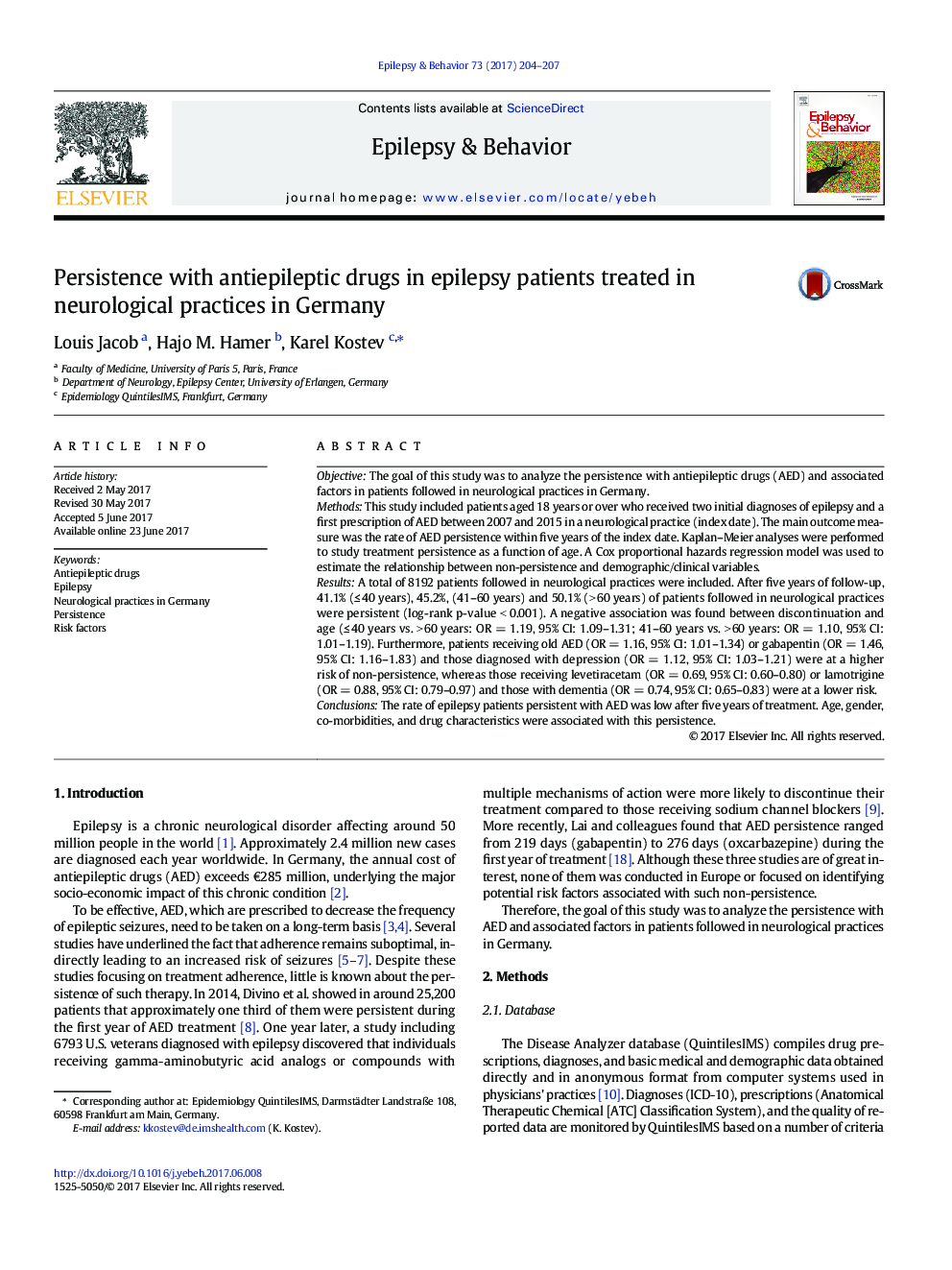| کد مقاله | کد نشریه | سال انتشار | مقاله انگلیسی | نسخه تمام متن |
|---|---|---|---|---|
| 5628363 | 1579820 | 2017 | 4 صفحه PDF | دانلود رایگان |
- The rate of persistence with antiepileptic drugs was low after 5Â years of treatment.
- A negative association was found between discontinuation and age.
- Several diagnoses and drug characteristics were also associated with persistence.
ObjectiveThe goal of this study was to analyze the persistence with antiepileptic drugs (AED) and associated factors in patients followed in neurological practices in Germany.MethodsThis study included patients aged 18 years or over who received two initial diagnoses of epilepsy and a first prescription of AED between 2007 and 2015 in a neurological practice (index date). The main outcome measure was the rate of AED persistence within five years of the index date. Kaplan-Meier analyses were performed to study treatment persistence as a function of age. A Cox proportional hazards regression model was used to estimate the relationship between non-persistence and demographic/clinical variables.ResultsA total of 8192 patients followed in neurological practices were included. After five years of follow-up, 41.1% (â¤Â 40 years), 45.2%, (41-60 years) and 50.1% (> 60 years) of patients followed in neurological practices were persistent (log-rank p-value < 0.001). A negative association was found between discontinuation and age (â¤Â 40 years vs. > 60 years: OR = 1.19, 95% CI: 1.09-1.31; 41-60 years vs. > 60 years: OR = 1.10, 95% CI: 1.01-1.19). Furthermore, patients receiving old AED (OR = 1.16, 95% CI: 1.01-1.34) or gabapentin (OR = 1.46, 95% CI: 1.16-1.83) and those diagnosed with depression (OR = 1.12, 95% CI: 1.03-1.21) were at a higher risk of non-persistence, whereas those receiving levetiracetam (OR = 0.69, 95% CI: 0.60-0.80) or lamotrigine (OR = 0.88, 95% CI: 0.79-0.97) and those with dementia (OR = 0.74, 95% CI: 0.65-0.83) were at a lower risk.ConclusionsThe rate of epilepsy patients persistent with AED was low after five years of treatment. Age, gender, co-morbidities, and drug characteristics were associated with this persistence.
Journal: Epilepsy & Behavior - Volume 73, August 2017, Pages 204-207
